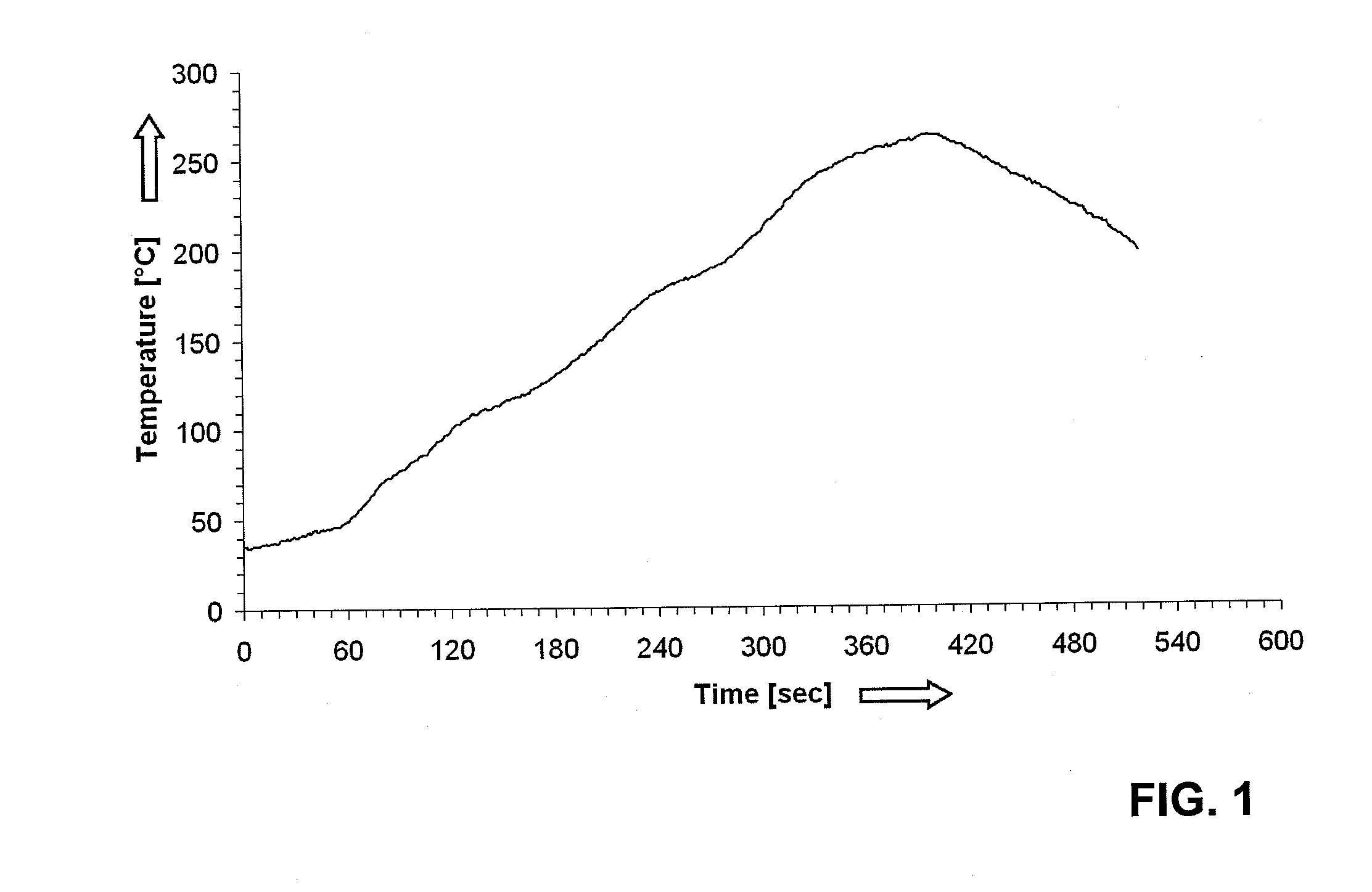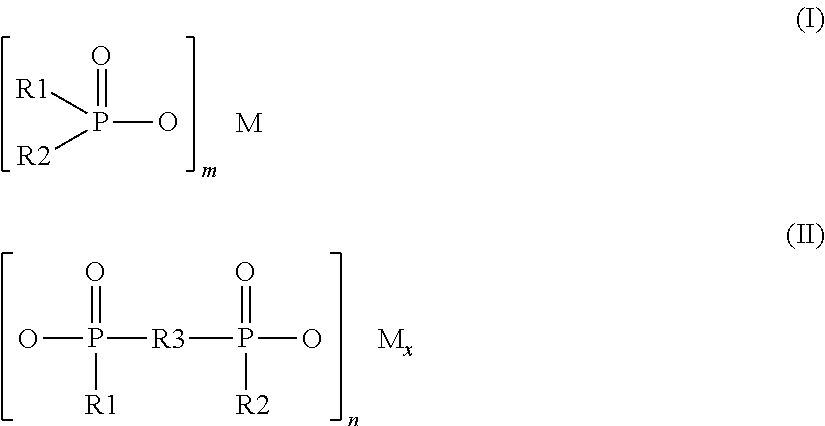Partially aromatic polyamide moulding compositions and their uses
- Summary
- Abstract
- Description
- Claims
- Application Information
AI Technical Summary
Benefits of technology
Problems solved by technology
Method used
Image
Examples
example e1
[0108]To produce Example E1, the raw polymer RP4 corresponding to Table 2 is compounded in a twin-screw extruder from Werner and Pfleiderer having a screw diameter of 25 mm with prescribed process parameters (barrel temperature: 320° C., speed of rotation of screw: 250 rpm, throughput: 10 kg / h). For this purpose, all components as per Table 2 with the exception of the flame retardant Exolit OP 1230 are premixed and metered by means of a balance into the intake of the twin-screw extruder. The flame retardant is likewise metered into the intake by means of a second balance. The melt is optionally slightly degassed by means of a stream of nitrogen in zone 10. The product is taken off as extrudate from a nozzle having a diameter of 3 mm and pelletized. The pellets are dried at 100° C. under a reduced pressure of 30 mbar for 24 hours.
examples e2 to e4
, AND COMPARATIVE EXAMPLES C1 TO C5
[0109]The Examples E2 to E4 and the Comparative Examples C1 to C5 are produced in a manner analogous to the description of the production process of Example E1.
TABLE 2Composition and properties of the compounds of Comparative Examples C1-C5 andExamples E1 to E4 Injection-moulding conditions for Comparative Examples C1 to C5and for Examples E1 to E4 as in the case of RP3.UnitC1C2C3C4E1E2E3E4C5Raw polymer—RP3RP3RP3RP3RP3RP3RP3RP2RP1Polyamide% by wt.84.074.074.074.074.073.974.073.574.0Irganox 1098% by wt.0.50.50.50.50.50.50.50.50.5Barium stearate% by wt.0.40.40.40.40.40.40.40.40.4Manganese dioxide% by wt.0.10.10.10.10.10.10.10.10.1Exolit OP1230% by wt.15.015.015.015.015.015.015.015.015.0Surlyn 9320% by wt.10.010.05.05.010.0Scona TSKD9103 GCT% by wt.10.0Scona TPPP2112 GA% by wt.10.0Lotader 4700% by wt.10.0MPP% by wt.0.5Grivory G21% by wt.5.0Microtalc IT extra% by wt.0.1Melting point° C.308307308308307307305295310Enthalpy of fusionJ / g503435363736375060G...
PUM
| Property | Measurement | Unit |
|---|---|---|
| Temperature | aaaaa | aaaaa |
| Temperature | aaaaa | aaaaa |
| Temperature | aaaaa | aaaaa |
Abstract
Description
Claims
Application Information
 Login to View More
Login to View More - R&D
- Intellectual Property
- Life Sciences
- Materials
- Tech Scout
- Unparalleled Data Quality
- Higher Quality Content
- 60% Fewer Hallucinations
Browse by: Latest US Patents, China's latest patents, Technical Efficacy Thesaurus, Application Domain, Technology Topic, Popular Technical Reports.
© 2025 PatSnap. All rights reserved.Legal|Privacy policy|Modern Slavery Act Transparency Statement|Sitemap|About US| Contact US: help@patsnap.com


